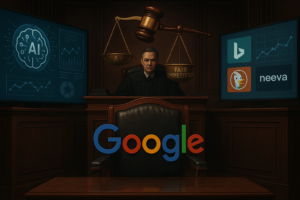The Reality of AI-Powered Surveillance: Efficiency or Overreach?
In a world rapidly advancing towards AI-driven surveillance, the efficacy, ethical considerations, and societal impact of these technologies are under increasing scrutiny. Governments and institutions around the globe are turning to artificial intelligence as a tool to monitor populations, prevent crimes, and ensure public safety. However, while the promises of AI-driven surveillance systems are alluring, questions remain about their reliability, transparency, and potential misuse.
The Rise of AI in Government Surveillance
The integration of AI technologies into surveillance systems has accelerated significantly over the past decade. From facial recognition and predictive policing to behavioral analytics and biometric identification, governments are leveraging AI to monitor individuals, analyze patterns, and respond to perceived threats.
Examples of AI Surveillance Technologies:
- Facial Recognition Systems: AI algorithms scan and identify individuals in real-time, using databases of stored images.
- Predictive Analytics: Machine learning models predict crime hotspots and identify potential offenders before a crime occurs.
- Behavioral Monitoring: AI tools analyze human behavior in public spaces to detect anomalies or suspicious activity.
- Smart Sensors and IoT Devices: Combined with AI, these tools collect and analyze massive datasets for surveillance purposes.
Countries like China have implemented AI-driven surveillance on a vast scale, integrating facial recognition cameras and data-driven systems into daily life. Other nations, including the United States, the United Kingdom, and India, are also deploying similar technologies to enhance law enforcement and national security efforts.
While these tools promise efficiency, scalability, and improved crime-solving capabilities, they also raise significant concerns regarding individual freedoms and ethical governance.
Key Benefits of AI-Driven Surveillance
Supporters of AI-powered surveillance argue that these technologies can bring tangible benefits to society. These include:
1. Crime Prevention and Detection
AI systems can identify criminal activities in real-time, enabling authorities to respond more quickly and effectively. Predictive analytics can help pinpoint areas where crime is likely to occur, allowing for preventive action and resource optimization.
2. Improved Public Safety
By leveraging AI-powered tools, governments can enhance security in high-risk zones such as airports, public gatherings, and critical infrastructure. Behavioral monitoring systems, for example, can flag unusual activities that may pose threats.
3. Efficiency and Scalability
Unlike manual surveillance, AI systems can analyze vast amounts of data in seconds, enabling authorities to process information more efficiently. This scalability allows governments to monitor larger areas with fewer resources.
4. Support for Law Enforcement
AI-driven surveillance tools provide law enforcement with valuable insights and data, helping to solve complex cases faster. For instance, facial recognition has been used to locate fugitives and missing persons.
While these benefits highlight the potential of AI to revolutionize surveillance, they are accompanied by ethical dilemmas and practical challenges that cannot be ignored.
Reliability and Accuracy: Can AI Be Trusted?
One of the most significant concerns surrounding AI-driven surveillance is the reliability of these systems. Despite advances in machine learning and data processing, AI technologies are not infallible. Issues such as false positives, biases, and algorithmic errors undermine their effectiveness and raise critical questions about their use in high-stakes scenarios.
1. Bias in AI Algorithms
AI surveillance systems often rely on data that may reflect societal biases. For instance, studies have shown that facial recognition tools are less accurate when identifying individuals from minority groups. This can lead to wrongful arrests, discrimination, and increased mistrust in law enforcement.
2. False Positives and Misidentifications
AI tools, particularly facial recognition systems, can produce false matches. Such errors have real-world consequences, including the wrongful detainment of innocent individuals. In sensitive environments like airports or public protests, these mistakes can escalate tensions.
3. Lack of Contextual Awareness
AI systems are adept at pattern recognition but lack human judgment. For example, behavioral analytics may flag innocent actions as suspicious simply because they deviate from “normal” patterns. Without proper oversight, such errors can lead to invasive interrogations or harassment.
Ensuring the reliability of AI systems requires rigorous testing, transparency in algorithmic design, and ongoing updates to minimize errors and biases.
Privacy and Ethical Concerns: A Question of Rights
While AI surveillance may enhance security, it often comes at the expense of privacy and individual freedoms. Critics argue that widespread surveillance systems infringe on basic human rights and create an environment of constant monitoring—a hallmark of authoritarian regimes.
1. Mass Surveillance and Data Collection
AI-powered systems rely on enormous amounts of personal data, including facial images, behavioral patterns, and biometric information. The indiscriminate collection of such data raises concerns about how it is stored, accessed, and used.
2. Chilling Effect on Free Expression
When people know they are being watched, it can deter them from exercising their right to free speech and assembly. For instance, surveillance of protests can discourage citizens from participating in democratic activities.
3. Risk of Misuse
In the absence of strict oversight, AI surveillance tools can be misused by governments to suppress dissent, target marginalized groups, or monitor political opponents. Such misuse undermines trust in public institutions and weakens democratic values.
Transparency, Accountability, and Oversight
To balance security and privacy, it is crucial to establish transparent frameworks for the deployment of AI-driven surveillance systems. Governments and organizations must adopt measures that ensure accountability and prevent abuse. These include:
1. Clear Regulatory Standards
Policymakers must develop clear guidelines on the ethical use of AI surveillance. This includes defining when and how such technologies can be deployed and ensuring compliance with human rights laws.
2. Independent Audits and Assessments
AI surveillance systems should be subject to regular audits by independent experts to identify biases, assess reliability, and ensure transparency in decision-making processes.
3. Public Awareness and Consent
Citizens should be informed about the use of AI surveillance tools and how their data is being collected and utilized. Consent and transparency are critical to maintaining public trust.
4. Oversight Bodies
Establishing independent oversight bodies can help monitor the use of AI technologies, investigate misuse, and hold authorities accountable for ethical violations.
Conclusion: Striking a Balance Between Security and Privacy
AI-driven surveillance represents a powerful tool in the pursuit of public safety and crime prevention. However, its deployment must be approached with caution to avoid infringing on individual rights and freedoms. While these systems offer efficiency, accuracy, and scalability, their reliability and ethical implications remain under question.
The path forward lies in achieving a delicate balance between leveraging AI for security and safeguarding privacy. Governments, policymakers, and tech companies must work together to create frameworks that prioritize transparency, accountability, and ethical use.
In an age of technological advancements, the question remains: Are AI-driven surveillance systems truly serving justice, or are they pushing us closer to an Orwellian reality? The answer will depend on how we choose to govern and regulate these technologies, ensuring they serve humanity without compromising our fundamental rights.


